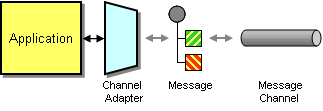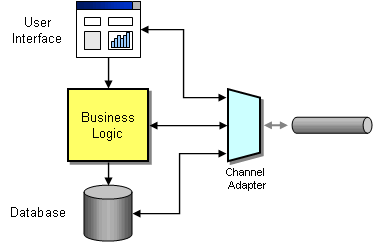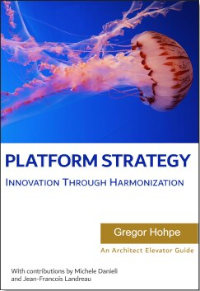Many enterprises use Messaging to integrate multiple, disparate applications.
How can you connect an application to the messaging system so that it can send and receive messages?

Use a Channel Adapter that can access the application's API or data and publish messages on a channel based on this data, and that likewise can receive messages and invoke functionality inside the application.
The adapter acts as a messaging client to the messaging system and invokes applications functions via an application-supplied interface. This way, any application can connect to the messaging system and be integrated with other applications as long as it has a proper Channel Adapter.
The Channel Adapter can connect to different layers of the application's architecture, depending on that architecture and the data the messaging system needs to access.

A Channel Adapter Connecting to Different Layers of an Application
... Read the entire pattern in the book Enterprise Integration Patterns
Related patterns:
Canonical Data Model, Message Channel, Introduction to Message Transformation, Message Translator, Messaging, Messaging Bridge, Transactional Client






